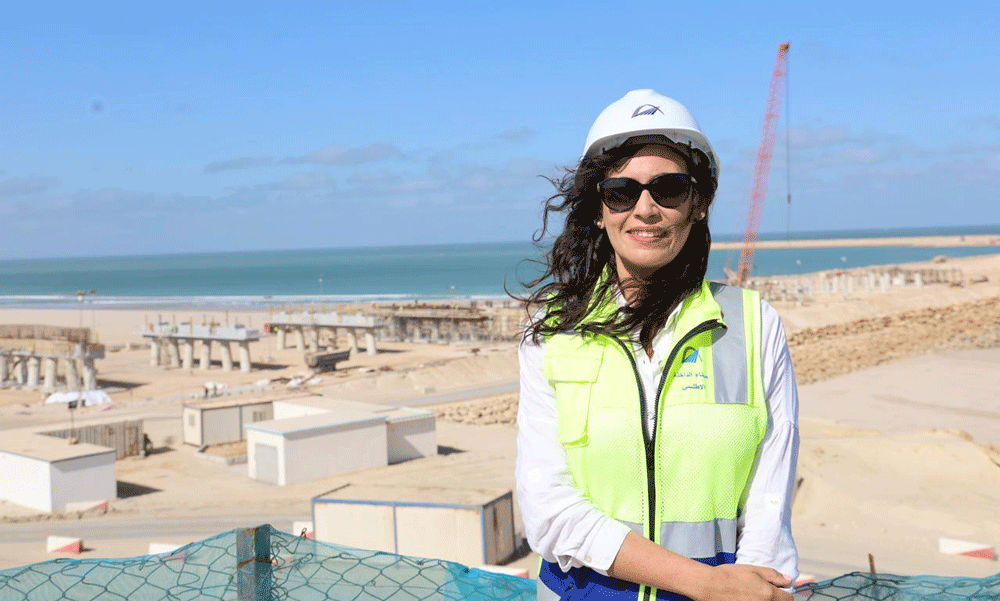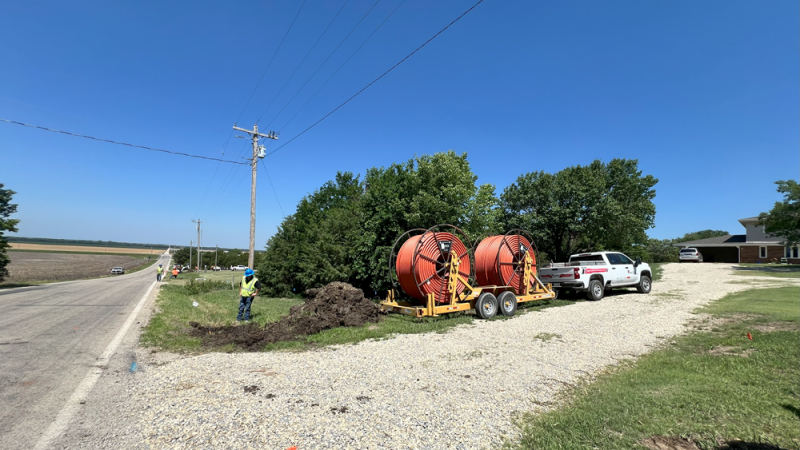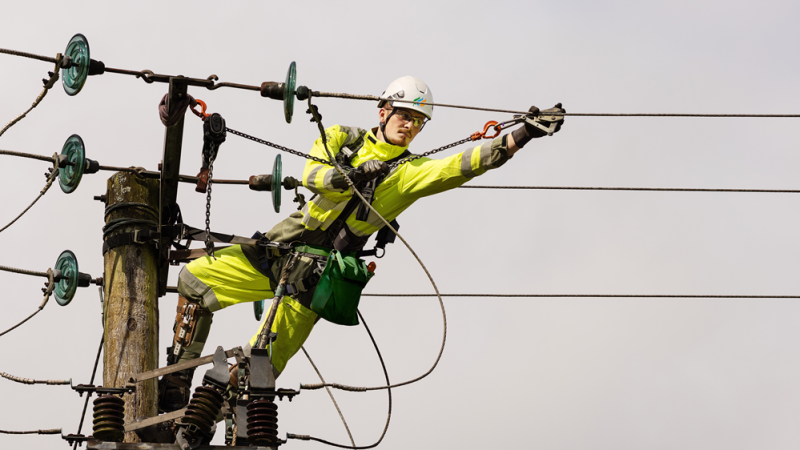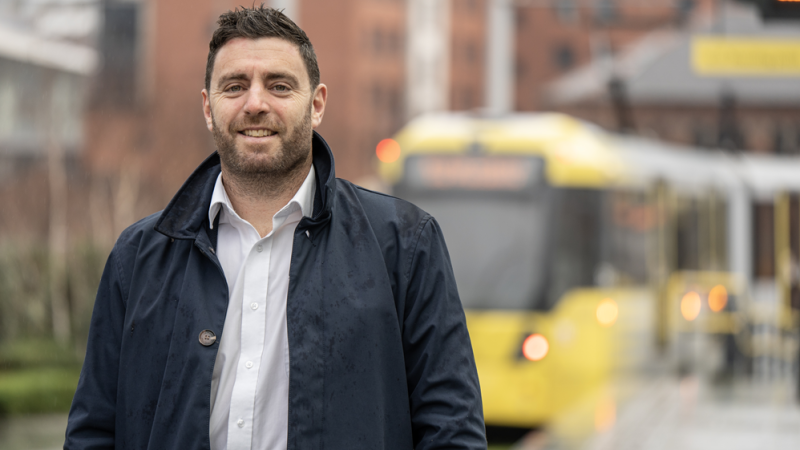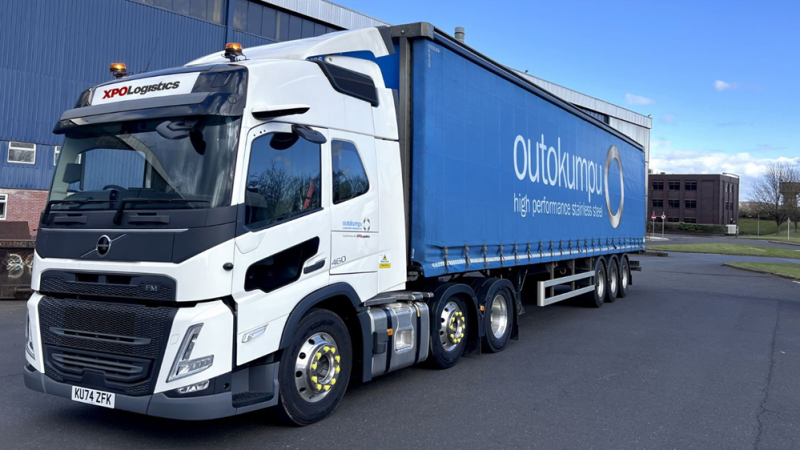Currently under construction, the new Dakhla Atlantic Port (DAP), located in southern Morocco, is expected to boost trade across West Africa and beyond. The $1.2 billion megaproject is due to complete in 2028 and will include a trade port, a fishing port and a shipyard. The port is set to support economic, social and industrial development in all productive sectors as well as providing the region with a modern and scalable logistic tool in line with the development aspirations of the region.
Once operational, the port, occupying 650 hectares, is expected to handle 35 million tonnes of goods a year, and also serve as a key infrastructure element operating in the field of transportation and storage of green hydrogen. In the vicinity of the port, one thousand hectares will be allocated for economic activities, including a logistic pole, a general industrial zone, a marine competitiveness pole, a commercial zone and a shared public services pole.
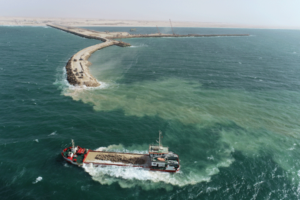 Transforming the region
Transforming the region
“As its name suggests, the Dakhla Atlantic Port embodies a royal vision for the Atlantic African alliance, an alliance based on development and shared prosperity for African countries,” says Nisrine Iouzzi, Director of Dakhla Atlantic Port Construction. “Proximity to the African and Latin American markets was one of the key factors when selecting the location for this green field development.”
She further points out that the port will integrate Sahel countries without a coastline, allowing them to benefit from the advantages of the Atlantic coast. “Like the Tanger Med port, the Dakhla Atlantic Port will enhance maritime connectivity between Morocco and other African countries, reaffirming Morocco’s significant role in the international maritime transport market. The Dakhla Atlantic Port will significantly contribute to inclusive economic and social development in the southern regions of Morocco.”
She further notes that the Dakhla Atlantic Port is the largest port planned within the country’s 2030 National Port Policy that began to be implemented in 2012. Within the policy, two major ports have already been completed on the Mediterranean coast, with the new port on the Atlantic coast expected to attract more port traffic coming to and from Africa, and also to strengthen the connectivity between Morocco and the countries of Americas.
Given the port’s location, a lot of preparatory work had to be done, including the development of the complete infrastructure counting roads and cement and steel plants to provide crucial raw materials. “We are proud to note that for the construction phase, the companies responsible for execution, monitoring, and control of the project are 100% Moroccan. This is thanks to the numerous port infrastructure projects completed over the past 12 years as part of the National Port Strategy for 2030.”
During the construction phase, the port is set to directly employ more than 2,500 people. As a hub for economic activity in the future, it is expected to have a positive impact on local communities, attracting businesses and creating jobs in construction, logistics, transportation, and related industries.
Strategic task
“The project is designed with scalability in mind, in order to meet the future needs of the region and Africa in terms of traffic demand and maritime connectivity,” affirms Iouzzi. “It also includes the construction of a maritime bridge to provide a deep-water port and regulate the project’s impact on the site’s hydro-sedimentary dynamics.”
Given the strategic importance of the new port and its size, challenges are an integral part of the process but these are being handled well. “The challenges can be summarized by the project management triangle – balancing scope, cost, and time to maintain high-quality construction. Addressing these challenges requires a comprehensive approach that combines strategic planning, technological innovation, and effective management,” says Iouzzi.
“The recruitment of the project team members was based on strict criteria, emphasizing experience and personal and professional skills to ensure the tasks are carried out effectively. Additionally, as part of project management, the project leadership has established a value system that the entire team adheres to.”
The same rigorous approach applies to managing suppliers – crucial partners for the project. Daily deliveries are required of high-quality materials and equipment that meet the standards specified in the contract in compliance with international regulations. “Just to give you an idea of the sheer size of the project – constructing the port will require 20 million kg of steel for piles, 29 million kg of steel for concrete reinforcements, 314,000 tonnes of cement, 1.2 million cubic meters of concrete, and 20 million tonnes of materials for dikes and embankments,” says Iouzzi.
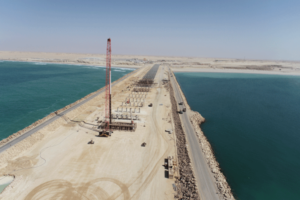 A green port
A green port
in April 2024, Morocco launched the Green Hydrogen Offer, a sustainable energy development plan, and the entire port will focus on the shift towards eco-friendly policies. Indeed, as soon as hydrocarbons are no longer needed, the port administration will convert the oil products terminal over to green energy.
In terms of sustainable development, an environmental preservation and monitoring plan has been implemented, along with a clean energy production system. Solar plants are already providing electricity to the construction site and other environmental measures have been implemented.
“Morocco has embarked on a comprehensive strategy for digital and environmental transition. Aligning with these national strategic orientations, we have ensured their integration throughout the various phases of the project, from the study phase to the construction phase,” says Iouzzi.
“During the study phase, we used cutting-edge technologies in digital and physical modelling, calculation, and sizing. This approach continued into the execution phase, where we employ intelligent control and monitoring systems, such as semi-automatic welding systems, drone-based work monitoring, and the use of new blocks for the breakwater armour.”
It seems that progress is well under control and construction is continuing according to plan. Following the preparatory works, some 25% of the port construction is now completed. “Over the next 12–18 months, we will focus on the completion of the maritime bridge and the ramping up of the main breakwater construction, along with the start of the quay block fabrication – on schedule for the port to be delivered in 2028 and open in 2029,” Iouzzi affirms in concluding.
